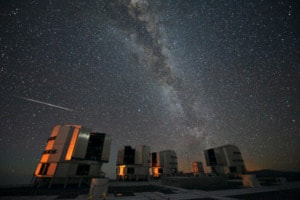Stargazers make get treated to one of mother nature’s fireworks shows if the Okanagan gets some clear night skies over the next few days.
The Earth is now passing through a stream left by Comet Encke, which produces the annual Taurid meteor shower.
"This shower is notorious for producing fireballs, and there are signs that this could be a year of enhanced activity,” said Dave Samuhel, a meteorologist with Accuweather.com.
Fireballs are extremely bright meteors that last for several seconds and can light up an entire countryside when they are at their brightest.
Unlike other meteor showers thought the year, the peak of the Taurid shower is drawn out, lasting nearly a week. This year, the peak is expected to occur from Nov. 5 through Nov. 12, but some meteors from the Taurids will continue through the end of the month.
The long peak of the shower means that stargazers will have several opportunities to see the Taurids, and one cloudy night should not prevent people from catching the display.
The best time for viewing the Taurids may prove to be near the end of the shower’s peak during the new moon, occurring the night of Nov. 11 into Nov. 12. Not only will the new moon make the evenings skies darker, but the long range weather forecast indicates skies could be clearing over the valley on Nov. 10 and 11.
Those heading out to look for the Taurids can do so at any time of the night as they will streak across the sky throughout the entire night. However, you may need to be patient.
"In a given year, this shower typically produces just five to 10 meteors per hour," Samuhel said. "There are notable swarm years, when this shower really impresses, and 2015 is one of those years.”
Even though the peak will not occur until Wednesday night, people will still be able to see some in the nights leading up to and following the peak.
